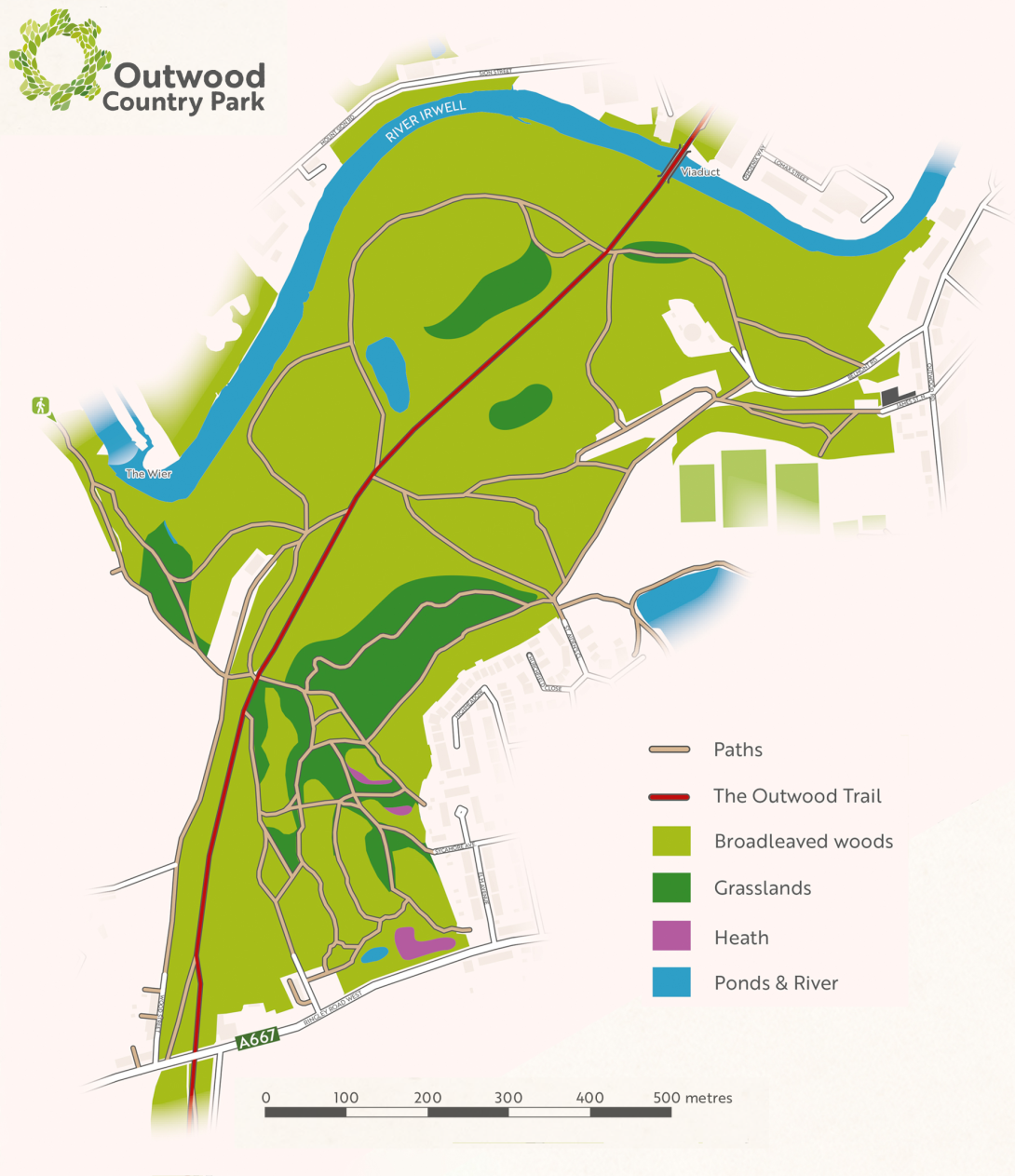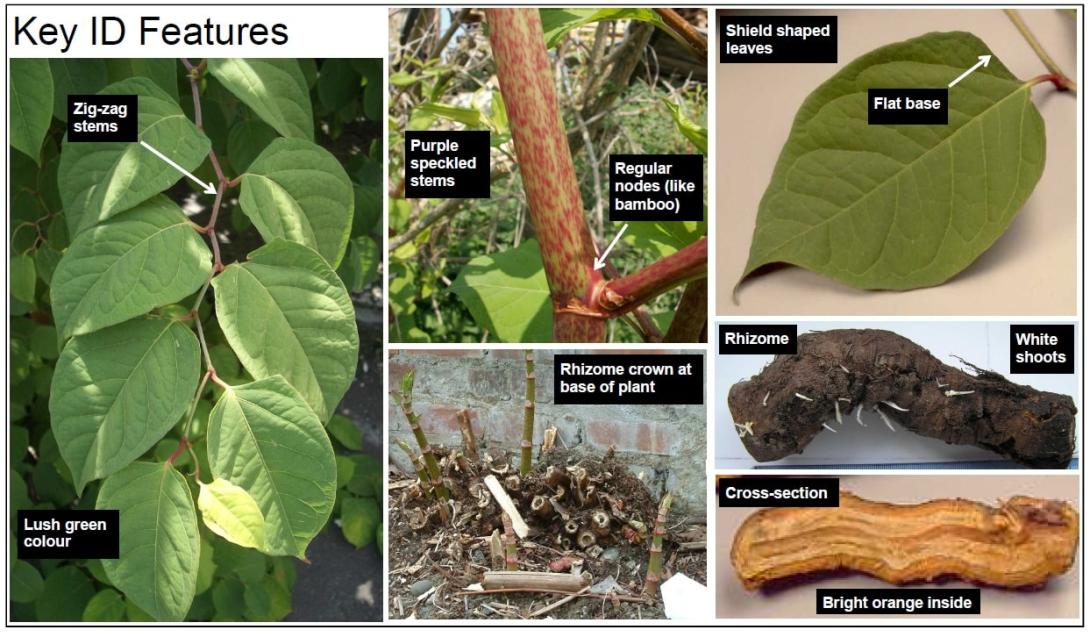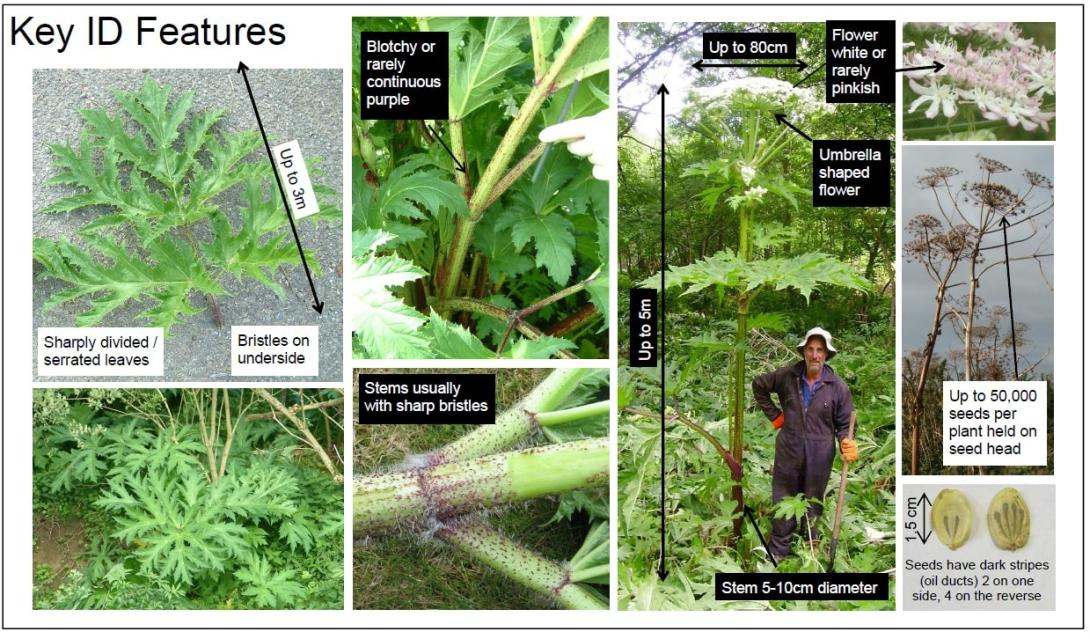Broadleaved woodland

Both old and new woodlands exist on site, with ancient cloughs surrounded by some 25,000 newly planted trees, that have been planted by Bury Council since 1997. Many UK native broadleaved species are found at the park, including alder, ash, elder, hawthorn, oaks and poplars. Much of the site is covered by willow and birch species, that dominate the wet and pioneering landscapes respectively.
Walk along the paths in the woodland and look up. How many leaf shapes can you see? How many twists and turns in the tree trunks can you see in those trees that are competing for sunlight?
Grassland
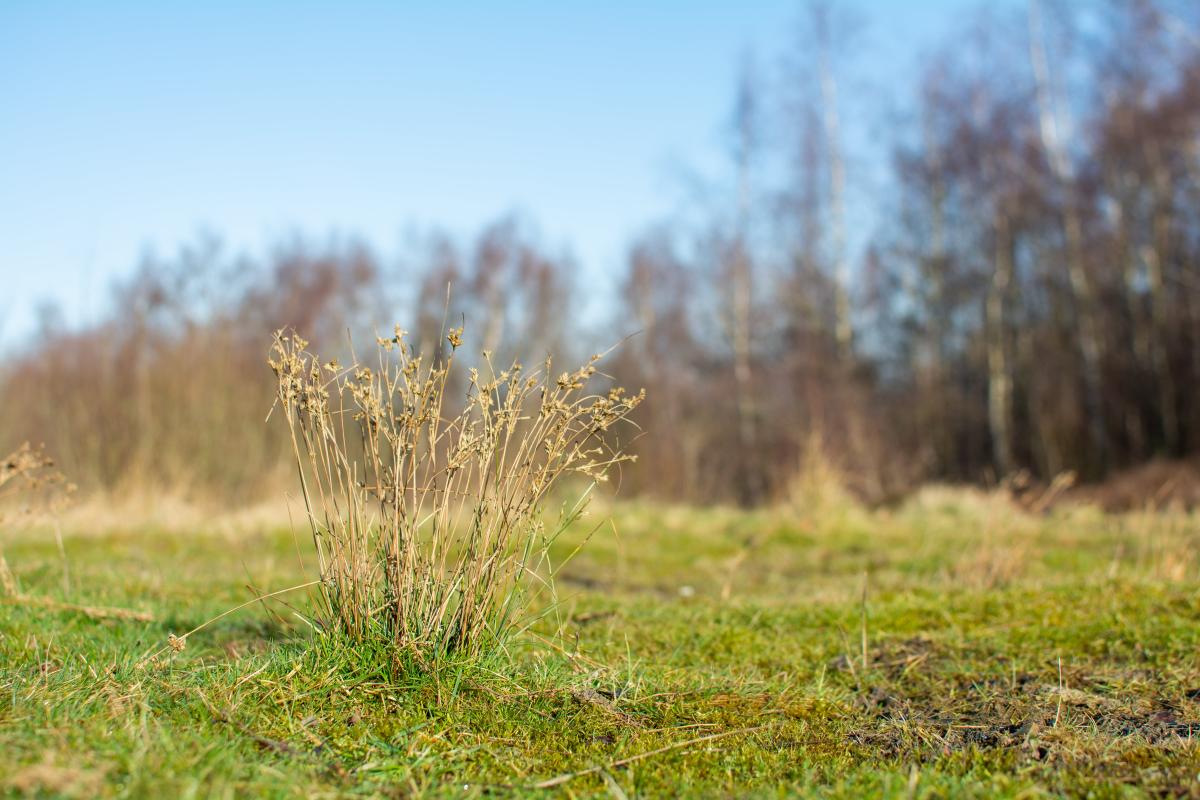
In areas where the woodland subsides, large areas of grassland are present, particularly upon the eastern site boundary. Dominated by grasses comprising of common species such as fescues, ryegrass and Yorkshire fog, herbs and wildflowers such as rumex, foxglove and cowslips are present at the edges of the habitat. Efforts have been made to transform this habitat into a richer bed of wildflowers.
Next time you walk through this grassland habitat, look out for glimpses of colour and see if you can identify which wildflower species are breaking through the grass. If you need help, have a go at using the iNaturalist App which you can find out more about here.
Heathland

Towards the east and south of the site, and perhaps where you would least expect to see it, pockets of heathland have formed as a barrier between the woodland and grassland. Heathlands are characterised by open spaces, made up of low-growing plants, dominated here by heather and grasses. A diverse habitat, this heather heathland creates lots of homes for all kinds of animals, insects, reptiles and birds that may be on site.
Come back and revisit this area through spring and particularly into late summer and watch the heather grow and transform the landscape into a bed of purple flowers, ideal for any basking animals to take shelter from the bathing sun!
Ponds
Outwood Park is home to two ponds. One larger pond is located to west of the site, and is covered with islands of bullrush and reeds, creating important habitat islands for a number of local aquatic species. A second pond, located upon the southern site boundary, has gently sloping sides and is covered in water lily, and can be admired from a bench upon the public footpath.
Next time you visit Outwood, how about sitting for a few minutes on the bench that overlooks the pond?
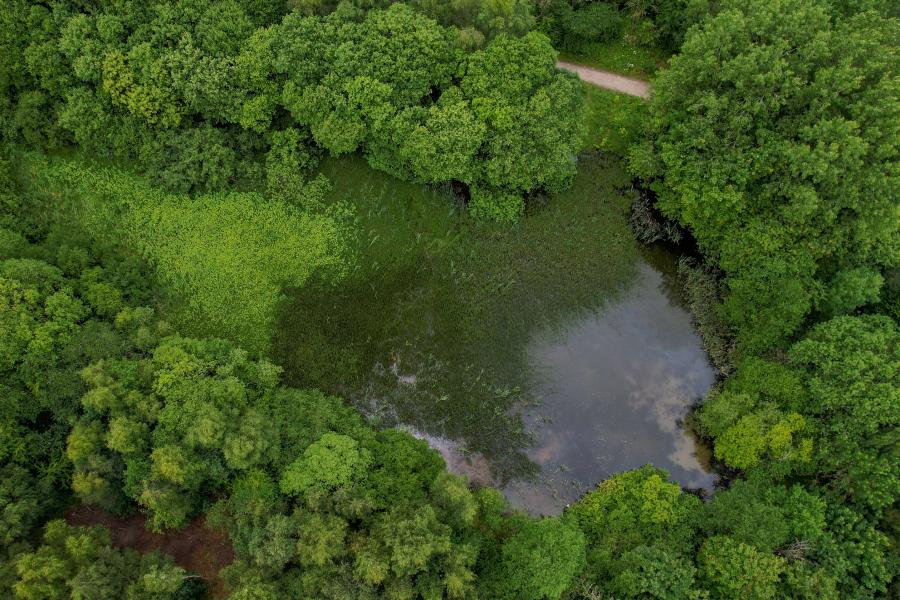
Leaky Dams
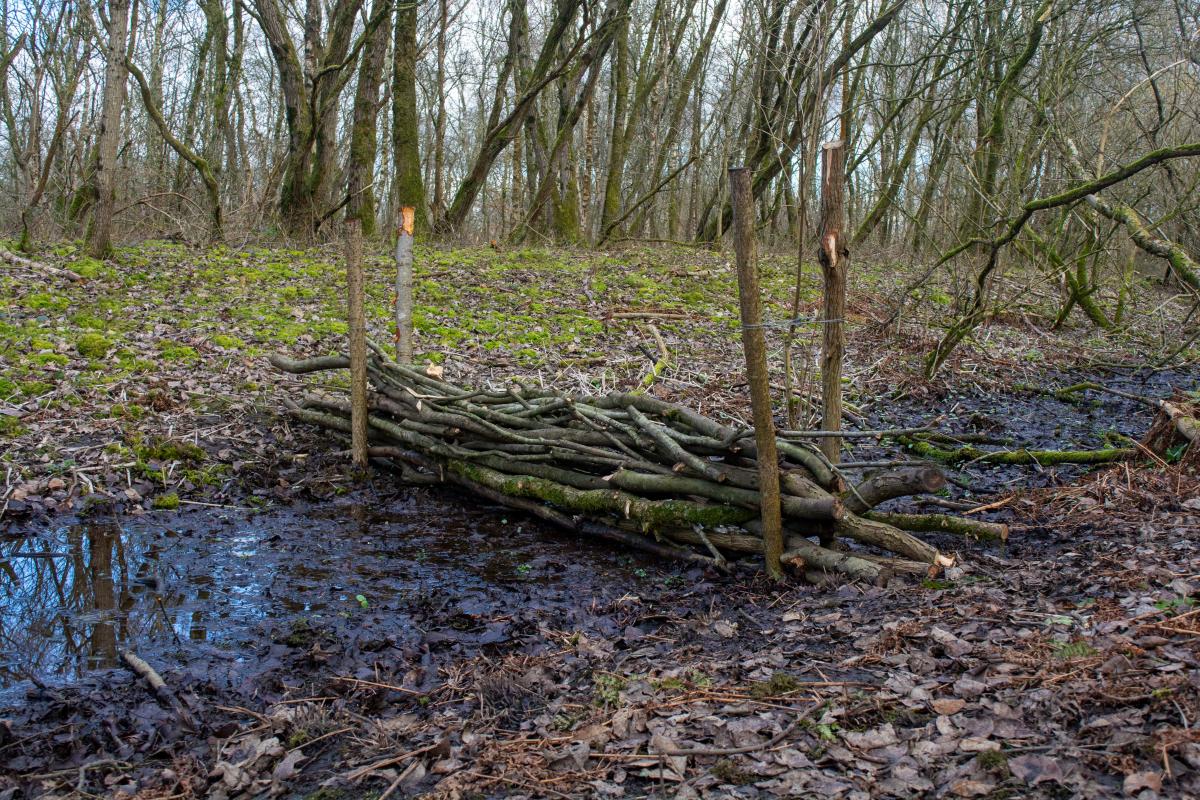
A number of small leaky dams were installed on site in early 2023, funded by the Government's Green Recovery Challenge Fund, and are the first of their kind to be installed in Bury!
Leaky dams are natural structures constructed from tree trunks installed across a watercourse to slow the flow of water into a river or tributary. At Outwood, they have been selectively installed within drainage ditches on site to help slow the flow of water when it rains, reducing the ‘peak’ flow and creating small areas of wet woodland benefiting a number of local species such as willow tits.
See if you can spot them next time you walk along the Outwood Trail!
Invasive Flora
What is an invasive non-native species?
A species that does not originate in the United Kingdom, but rather has been brought here by other means such as for planting in ornamental gardens.
They have no natural enemies to control them, and as a result, they out compete native plants leading to large groups of plants that dominate the landscape forming a monoculture.
Find out more about non-native invasives here or visit Bury Councils website here.
Invasives and Outwood Park
As with a lot of green spaces across the country, Outwood Park suffers from the presence of non-native invasive plant species, including:
- Japanese knotweed (Fallopia japonica)
- Giant hogweed (Heracleum mantegazzianum)
- Himalayan balsam (Impatiens glandulifera)
Mapping
In 2022, as part of the works funded by The Government’s Green Recovery Challenge Fund, the presence of Himalayan balsam, Japanese knotweed and giant hogweed was mapped on foot and by drone, across the site.
Japanese knotweed
Japanese knotweed is a highly invasive weed which overwhelms other plants. It spreads rapidly (up to 10 cm per day) and can reach a height of 10 feet (3 metres). It is present in scattered patches throughout Outwood Park (see map above for exact locations).
It can:
- grow almost anywhere
- cause structural damage to buildings and other structures (e.g. by growing through cracks in masonry)
- reduce land values
- cause difficulty in obtaining a mortgage
See here for more information on Japanese knotweed, how to ID it and how to report a sighting to Bury Council.
Giant hogweed
Giant hogweed is a fast-growing invasive plant that mainly grows next to water, in damp meadows or on derelict land. It is present along the banks of The River Irwell at Outwood Park (see map above for exact locations).
PLEASE KEEP AWAY FROM THIS PLANT ON SITE.
- The sap from Giant Hogweed can cause serious painful burns to humans and animals and make skin sensitive to strong sunlight.
- Keep away from the plants to avoid the risk of injury and do not touch them.
- If you do come into contact with the sap wash the area thoroughly, keep out of direct sunlight and seek medical attention.
See here for more information on giant hogweed, how to ID it and how to report a sighting to Bury Council.
How can I help the invasive problem at Outwood?
Himalayan balsam is present at Outwood and good news(!) you can help! You don’t need specialist equipment or a licence to remove balsam, just a love of the outdoors and some good old fashioned elbow grease. See map above for locations on site.
What is Himalayan balsam?
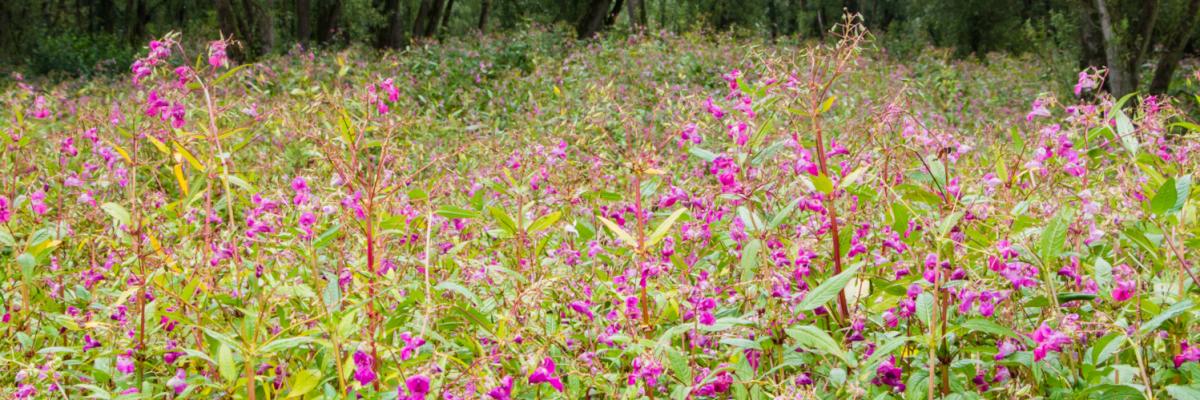
A tall, attractive, annual herb with explosive seed heads. Introduced as a garden plant in the early 19th century and first recorded in the wild in 1855. Now widespread in the UK, especially along urban rivers. It spreads solely by seeds, which are small and easily carried by wind or water. Himalayan balsam out-competes native species in ecologically sensitive areas, particularly river banks. Where it grows in dense stands along river banks it can impede flow at times of high rainfall, increasing the likelihood of flooding. Die back of extensive stands over winter can leave river banks bare and exposed to erosion.
The law
Himalayan balsam is listed under Schedule 9 to the Wildlife and Countryside Act 1981 with respect to England and Wales. As such, it is an offence to plant or otherwise allow this species to grow in the wild.
How to ID balsam
How you can help control Himalayan balsam at Outwood
- Grab a pair of gardening gloves - as a safety precaution it is always recommended that you wear suitable gear that you don’t mind getting mucky.
- Uproot! - Once you have identified your balsam, grab the stem from its lowest point, giving it a sturdy tug to uproot the whole plant.
- Break or damage the root - Using your hands or foot, snap the root of the plant just above its lowest ‘nobble’ point. Doing this will ensure it doesn’t re-root itself!
- Pile Up - With each plant you pull up, start to build a compost pile so that the process of natural degradation can begin. If you are near a public footpath make sure that the pile isn’t blocking access for passers-by.
- Repeat and revisit - It’s always good to revisit sites to continue the fight!
